Five Positions Of The Pentatonic Minor Scale
This lesson will cover learning the five positions of pentatonic minor for guitar and bass. Below you will see the full version of the E pentatonic minor scale, showing where each position should be played in E pentatonic minor on the guitar. You can also see where all of the root notes are on the full diagram of E pentatonic minor.

* Note that the positions overlap, for instance position two is simply the top half of position one mated with the bottom half of position 3.
All of these positions fit together perfectly and will always be in the same order that they are here. That means that they must always be positioned together as they are and their relation to each other will never change. To play this pentatonic minor scale in any key other than E, you would have to slide the whole note diagram up or down the neck, moving all the positions together. This will be covered in the transposing scales lesson.
Now that you can see all of the positions and how they work together to form the E pentatonic minor scale, I will show you the individual positions. You will notice that there are no marks on the notes in the position diagrams to show where the root note is as this is not important for the positions. We will find out why this is when we get to the lesson on transposing.
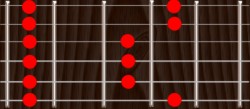
Position One
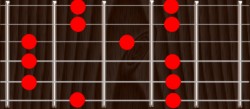
Position Two
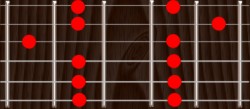
Position Three
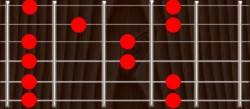
Position Four
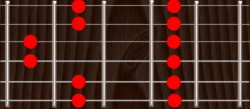
Position Five
Now we can move on to start learning how to use this in your playing. The next section is on "phrasing" and will teach you how to play this scale with feeling and start improvising with it.
Recommended Books On The Pentatonics
 Jazz Guitar Soloing Concepts : A Pentatonic Approach to Improvisation - Learn an entirely new way to improvise over jazz changes This hefty book/CD pack sheds new light on the old five-note scales that all guitarists know and love. The system is theoretically sound, easy to implement, and best of all, it's designed specifically for guitar. It will work with any chord progression - from simple to complex and, unlike other systems, there are no notes to avoid.
Jazz Guitar Soloing Concepts : A Pentatonic Approach to Improvisation - Learn an entirely new way to improvise over jazz changes This hefty book/CD pack sheds new light on the old five-note scales that all guitarists know and love. The system is theoretically sound, easy to implement, and best of all, it's designed specifically for guitar. It will work with any chord progression - from simple to complex and, unlike other systems, there are no notes to avoid.
